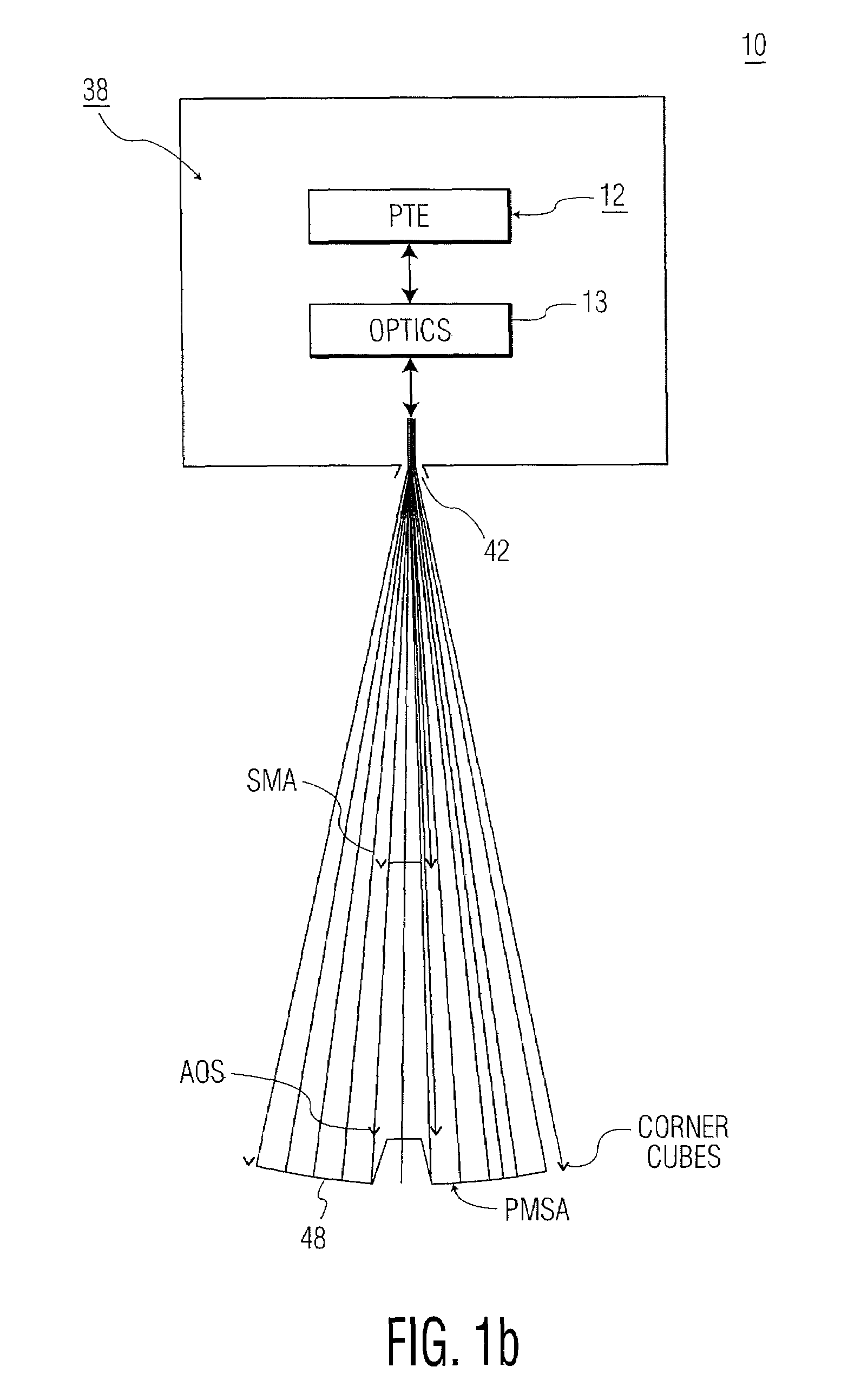Sequentially addressable radius measurements of an optical surface using a range finder
- Summary
- Abstract
- Description
- Claims
- Application Information
AI Technical Summary
Benefits of technology
Problems solved by technology
Method used
Image
Examples
Embodiment Construction
[0029]As will be explained, the present invention provides a series of absolute distance measurements to one or more mirror segments of a PM and quickly determines the RoCs of each mirror segment.
[0030]As will be explained, the present invention takes advantage of unique geometric properties of an achromatic objective and a reflective null assembly to direct a range finder's beam at normal incidence to the PM surface. This permits multiple sequential radius measurements on any mirror segment of a PM.
[0031]The present invention includes a single range finder, multiple fold mirrors, a collimator, mask apertures, scanning pentaprisms, and a reflective null assembly. An example of a ranger finder that may be used by the present invention is an absolute distance meter (ADM) manufactured by Leica. The ADM transmits a 10 mm diameter beam at a wavelength of 780 nm; has a range of 50 meters; and an accuracy of 20 microns in a vacuum environment. The ADM exemplified below is typically used in...
PUM
 Login to view more
Login to view more Abstract
Description
Claims
Application Information
 Login to view more
Login to view more - R&D Engineer
- R&D Manager
- IP Professional
- Industry Leading Data Capabilities
- Powerful AI technology
- Patent DNA Extraction
Browse by: Latest US Patents, China's latest patents, Technical Efficacy Thesaurus, Application Domain, Technology Topic.
© 2024 PatSnap. All rights reserved.Legal|Privacy policy|Modern Slavery Act Transparency Statement|Sitemap



